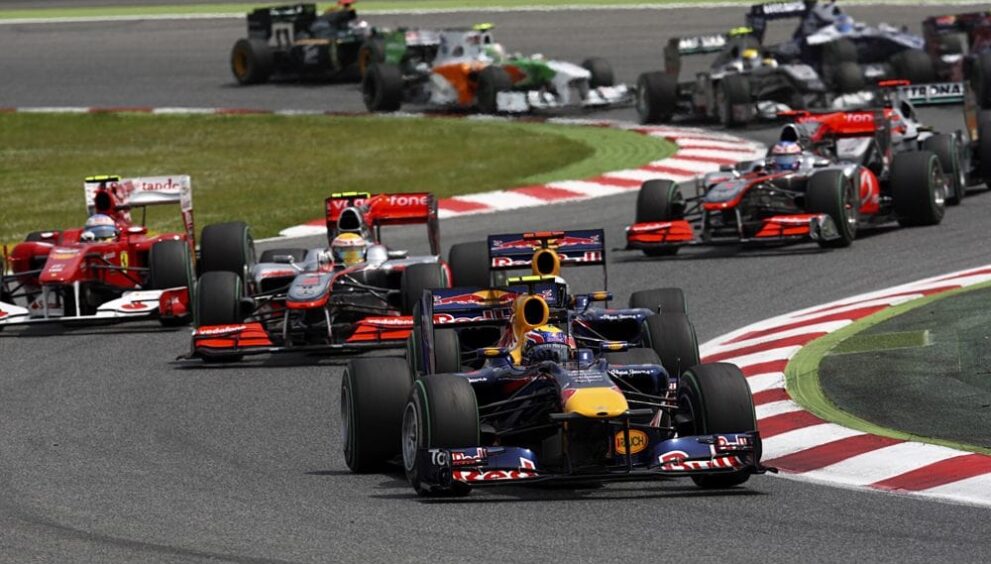From Start to Finish: Mastering the Art of Racing

Introduction
Racing is an exhilarating sport that requires skill, precision, and a deep understanding of the art of driving. Whether you’re a professional race car driver or an enthusiastic amateur, mastering the art of racing is a journey that involves continuous learning, practice, and refinement of techniques. In this article, we will explore the key aspects of racing, from the basics to advanced strategies, guiding you from start to finish on your path to becoming a skilled racer.
Understanding the Basics of Racing
The Different Types of Racing
Racing encompasses a wide range of disciplines, including Formula 1, NASCAR, rally racing, endurance racing, and more. Each type of racing has its own unique characteristics, rules, and challenges. It’s important to choose the type of racing that aligns with your interests, skills, and goals.
Racing Terminologies
Before diving into the world of racing, it’s essential to familiarize yourself with the terminology used in the sport. From apex to drafting to understeer, understanding these terms will help you communicate effectively with other racers and better comprehend racing strategies and techniques.
Preparing Yourself for Racing
Physical Fitness and Endurance
Racing requires physical stamina and endurance. Engaging in regular cardiovascular exercises, strength training, and flexibility workouts will enhance your overall fitness levels and help you cope with the physical demands of racing. Additionally, maintaining a healthy diet and staying hydrated are crucial for optimal performance on the track.
Mental Preparation
Developing mental resilience, focus, and concentration is vital to make split-second decisions while racing at high speeds. Techniques such as visualization, meditation, and mindfulness can help you stay calm under pressure and maintain a sharp mental state during races.
Training and Practice
To improve your racing skills, consistent training and practice are essential. Utilize racing simulators, participate in karting events, and join racing schools to gain valuable experience and hone your driving abilities. Additionally, seek guidance from experienced racers or coaches who can provide valuable insights and feedback.
Choosing the Right Racing Equipment
The Importance of a Good Racing Vehicle
Selecting the right racing vehicle is crucial for success on the track. Factors such as horsepower, handling, aerodynamics, and reliability play significant roles in determining the performance of your vehicle. Consult with experts, conduct thorough research, and test-drive different cars to find the one that suits your racing style and goals.
Safety Gear and Equipment
Safety should be a top priority in racing. Invest in high-quality safety gear, including helmets, fire-resistant suits, gloves, and shoes. These items provide essential protection in the event of accidents or collisions. Regularly inspect and maintain your safety equipment to ensure it remains in optimal condition.
Mastering the Techniques of Racing
Cornering
Cornering is a fundamental skill in racing. It involves entering, navigating, and exiting a turn with precision and minimal loss of speed. Understanding the racing line, braking points, and apexes are key components of successful cornering. Practice cornering techniques in various conditions to improve your skills.
Overtaking Strategies
Overtaking competitors requires skillful execution and timing. Learning techniques such as slipstreaming, dive bombing, and defending your position will give you an advantage during races. Anticipate the movements of other racers, identify their weaknesses, and capitalize on opportunities to make successful overtakes.
Qualifying Sessions
Qualifying sessions determine your starting position on the grid. Utilize these sessions to showcase your skills and secure a favorable starting position. Push your limits, set fast lap times, and exploit the available track conditions to gain an advantage over your competitors.
Race Tactics
During the race, adopt strategic approaches based on your goals and the race circumstances. Factors such as tire wear, fuel consumption, and competitor strategies must be considered. Whether it’s aggressive overtaking or a more conservative approach to conserve resources, choose tactics that align with your overall race strategy.
The Importance of Teamwork in Racing
Building a Supportive Team
Behind every successful racer is a dedicated team. Collaborate with experienced mechanics, engineers, and strategists who can fine-tune your vehicle and provide valuable insights. Foster effective communication, trust, and mutual respect within your team to maximize performance on and off the track.
Dealing with Challenges and Setbacks
Handling Pressure and Nerves
Racing can be highly demanding, both physically and mentally. Learning to manage pressure and nerves is essential for maintaining focus and making sound decisions during intense racing situations. Techniques such as deep breathing, positive self-talk, and mental visualization can help calm your mind and enhance performance under pressure.
Overcoming Obstacles
Setbacks are a natural part of racing. Whether it’s mechanical failures, accidents, or mistakes on the track, learning from these experiences is crucial for growth. Develop resilience and adaptability to bounce back from setbacks, analyze the causes, and implement improvements to avoid similar issues in the future.
Celebrating Success and Continuous Improvement
Analyzing Race Performance
After each race, analyze your performance to identify areas of strength and areas that need improvement. Review telemetry data, race videos, and lap times to evaluate your driving techniques and strategical decisions. Seek feedback from your team and experienced racers to gain valuable insights for further development.
Setting Goals and Working Towards Them
Set clear, measurable goals to guide your racing journey. Whether it’s achieving faster lap times, winning championships, or progressing to higher levels of racing, define your objectives and break them down into actionable steps. Consistently work towards these goals, staying committed to continuous improvement.
Conclusion
Mastering the art of racing is a challenging yet rewarding journey. By understanding the basics, preparing yourself physically and mentally, choosing the right equipment, and continuously refining your techniques, you can develop into a skilled and successful racer. Embrace the spirit of competition, never stop learning, and enjoy the thrill of pushing your limits on the racetrack.











































